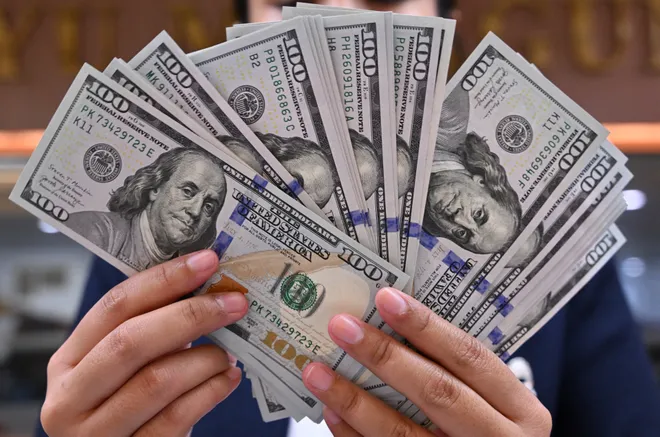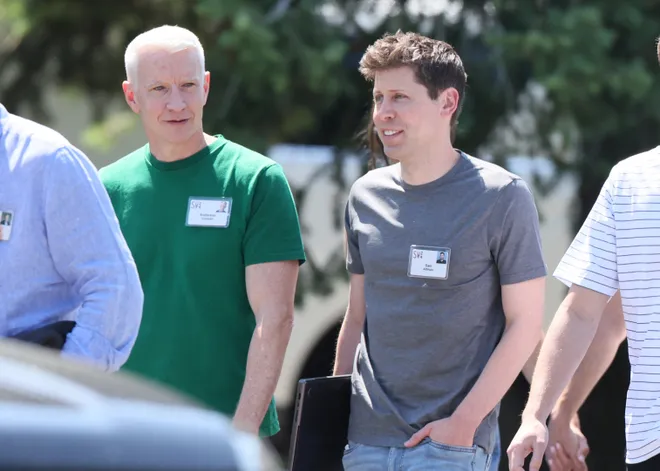How much is $1,000 a month worth? New study explores impact of basic income
Millions of Americans struggle to afford basics like food and rent. A new study spearheaded by the CEO of ChatGPT’s parent company shows regular, unconditional cash payments could help.
A three-year study from OpenResearch, a nonprofit research organization backed by OpenAI CEO Sam Altman, examined the effects of a no-strings-attached $1,000-a-month cash transfer on recipients’ health, employment and spending. It’s the latest and largest study of its kind to show how unconditional cash could help lower-income families meet basic needs like food and housing.
“We’re all finding the same results,” said Stacia West, co-founder and director of the University of Pennsylvania’s Center for Guaranteed Income Research. “You give people cash, and they make great decisions for themselves and their family in a way that you know can promote upward economic mobility."

What are the effects of guaranteed basic income?
OpenResearch’s study kicked off in 2020 with 3,000 lower-income participants recruited through Illinois and Texas nonprofits. One thousand participants received $1,000 a month in cash to spend however they’d like, and a 2,000-person control group received $50 a month.
Learn more: Best current CD rates
Overall, researchers said, their findings suggest cash “provides flexibility.”
Study:Over two-thirds of Americans are stressed by everyday expenses – these are the most frustrating ones
"The data we collected highlights the complexity of people’s lives and needs," reads a statement from OpenResearch shared with USA TODAY. "Cash provides the flexibility to meet those diverse needs, and it is responsive when needs shift based on a person’s circumstances."
According to the study:
- Recipients increased their spending by $310 a month on average, primarily using the money for essentials like food, housing and transportation.
- The money was also used as financial support for others, with recipients spending an average of $22 more a month on things like gifts to friends and family, loans, donations to charity and alimony payments.
- Recipients worked 1.3 hours less a week on average compared with the control group and reported more leisure time but remained engaged in the workforce.
- Recipients were 26% more likely to visit a hospital in the last year of the study and 10% more likely to get dental care and visit an emergency room. They also reported a decrease in problematic alcohol and some types of illicit drug use.
- Recipients were 4.4 percentage points more likely to move neighborhoods. OpenResearch plans to look into how the cash transfers affected housing stability and neighborhood quality in future analyses.
- Recipients ‒ especially Black and female recipients ‒ were more likely to report having an idea for a business. Recipients also reported a greater likelihood of starting a business within the next five years.
But OpenResearch’s findings also indicate cash isn’t the solution for everything.
- There were no significant effects on physical health, self-reported access to health care or behaviors like exercise or sleep.
- The study found notable improvements in stress, mental distress and food security – but only during the first year of the study. Those effects faded by the second year. An OpenResearch spokesperson said macroeconomic factors ‒ like inflation and the loss of pandemic-era aid ‒ may have eroded the initial improvements, but researchers will continue to analyze the data.
Sevly Snguon, co-founder and co-chair of the Guaranteed Income Health Consortium at the Johns Hopkins Bloomberg School of Public Health, said various research shows guaranteed income is just one piece of the puzzle.
"There's still a need for additional resources for people who are parents. They might need more childcare, more support there. Affordable housing, health care," they said. "But guaranteed income helps with people during those key transition periods."
OpenResearch plans to publish additional findings in the coming months on the cash transfers' impact on housing outcomes, political attitudes and the recipients' children.
The push for guaranteed basic income
There are different visions for basic income, with some pushing for payments targeting certain demographics while others have called for a broader universal basic income that would transfer money to every American adult.
How it's going:Guaranteed basic income pilot programs are growing around the country

In a 2016 blog post, OpenAI CEO Sam Altman said the idea of a basic income study had “intrigued” him, and he wanted to study the concept in anticipation of technology eliminating jobs.
“I think that, combined with innovation driving down the cost of having a great life, by doing something like this we could eventually make real progress towards eliminating poverty,” Altman’s post read.

Other big names in Silicon Valley – including former Twitter CEO Jack Dorsey and Tesla CEO Elon Musk – have advocated for guaranteed basic income over the years, and dozens of pilot programs have launched across the country as researchers work to figure out when and how these programs are most effective.
Research so far shows basic income can help lower-income families afford the basics. One 2020 study from Columbia University’s Center on Poverty and Social Policy found $250 a month for adults and children can reduce poverty by 40%. Another 2020 report from the Stanford Basic Income Lab said overall evidence “consistently demonstrates that unconditional cash in low- and middle-income countries leads to a measurable decrease in poverty.”
But the concept has received pushback.
More than half of U.S. adults opposed a universal basic income of about $1,000 a month for adults when surveyed by Pew Research Center in 2020, and the greatest opposition was among white adults. A number of states, including Iowa and South Dakota, have passed bills that prohibit counties or cities from providing guaranteed income programs as skeptics argued that the money would discourage people from working.
Basic income studies have shown mixed results on its influence on employment, according to Sara Kimberlin, executive director and senior research scholar at the Stanford Center on Poverty and Inequality. Sometimes recipients have higher employment rates than the control group. Other studies show a decrease in employment, although Kimberlin notes that can be for positive reasons, like cutting back work hours to take care of children and other family members.
"There really isn't anywhere in the United States where someone can live on just $1,000 a month," Kimberlin said. "So of course people are working, and they have income from other sources, and they have needs that go beyond what can be covered with $1,000 a month."
Disclaimer: The copyright of this article belongs to the original author. Reposting this article is solely for the purpose of information dissemination and does not constitute any investment advice. If there is any infringement, please contact us immediately. We will make corrections or deletions as necessary. Thank you.







